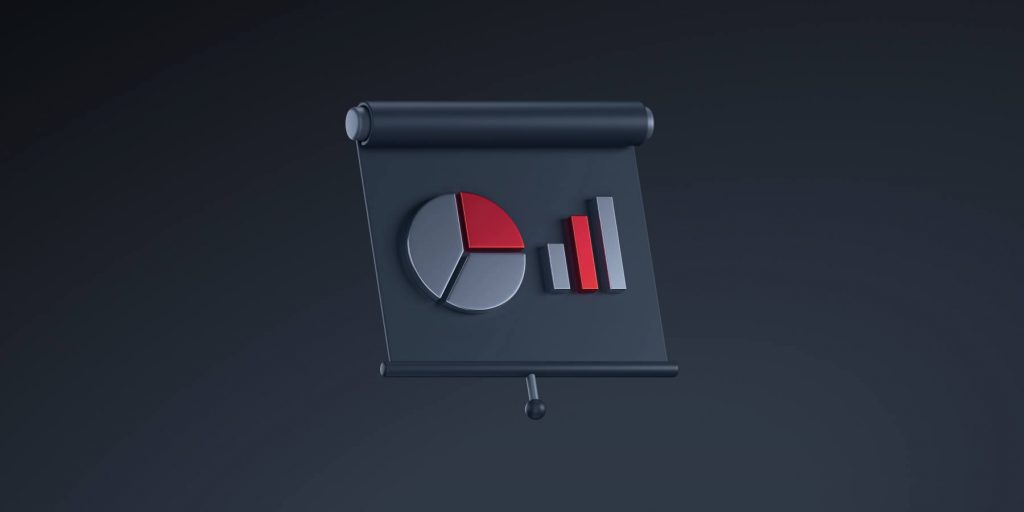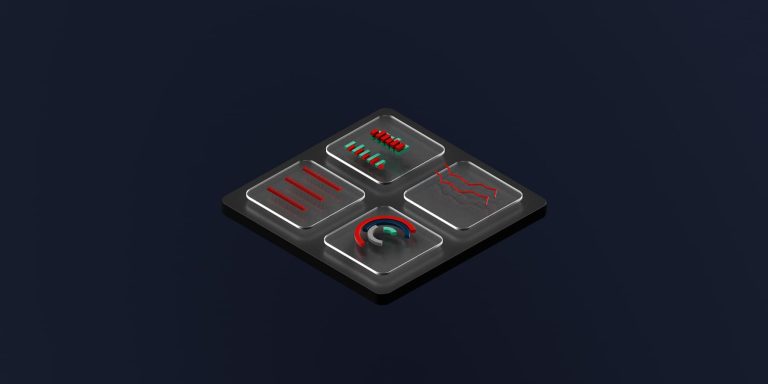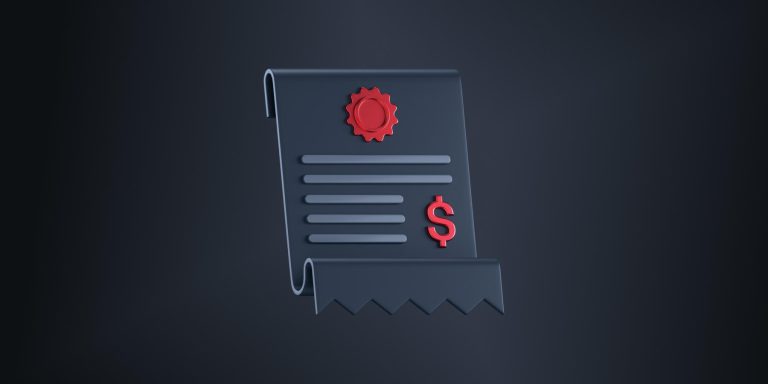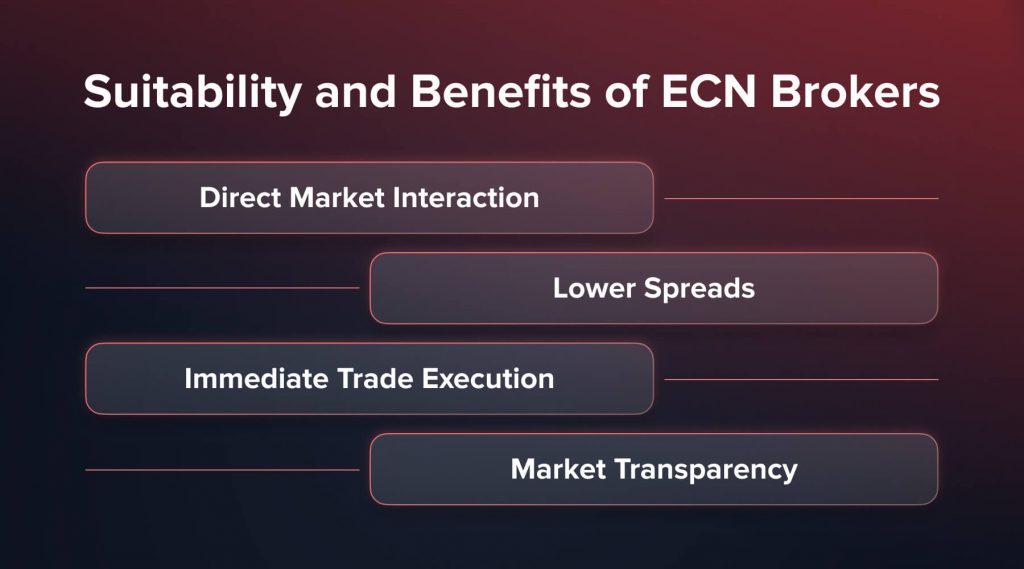
¿Qué son los brokers de Forex ECN y STP y cómo funcionan?
Contenidos
Al vincular a los comerciantes directamente con los proveedores de liquidez, dos tipos de modelos de corretaje, ECN y STP Forex Brokers, los comerciantes de Help negocian el mercado de divisas extranjeras, formando la columna vertebral operativa de muchos plataformas de corretaje de Forex . Mediante una red transparente creada por los corredores ECN, los comerciantes pueden obtener precios en tiempo real y liquidez profunda directamente de muchos participantes del mercado, evitando así a los intermediarios. Al enrutar órdenes directamente a los proveedores de liquidez, los corredores de STP simplifican el proceso de negociación y garantizan la ejecución comercial efectiva sin participación de la casa de tratos. Para los comerciantes y los futuros propietarios de corretaje, saber cómo conducen estos corredores es crucial a medida que afecta técnicas comerciales , gastos y toda la experiencia comercial.
Comprensión de los corredores de forex
Actuando como el centro entre los comerciantes individuales y el mercado mundial de divisas, los corredores de divisas son la base sobre la cual se basa el mundo vibrante del comercio de divisas. Son los diseñadores de un entorno comercial seguro y favorable, lo que permite a los comerciantes negociar el terreno desafiante del intercambio de divisas.
Forex Brokers Facilitar fundamentalmente las transacciones en moneda extranjera, lo que permite a los comerciantes comprar y vender fácilmente monedas extranjeras. Sus tareas son complejas; Suministran a los comerciantes con la plataforma, las herramientas y el acceso al mercado que necesitan para ejecutar eficientemente su estrategia comercial. Entregan análisis e información de mercado crucial, lo que ayuda a los operadores a tomar decisiones informadas y calculadas basadas en herramientas como indicadores comerciales y análisis de liquidez. Para cualquiera que espere ingresar a la industria del corretaje, el conocimiento de los roles y funciones de Forex Broker es muy crucial.
You may also like

Tipos de corredores de Forex
Los corredores de Forex aparecen en numerosas formas, cada uno con una filosofía operativa diferente y una gama de productos. Los fabricantes de mercado, que toman el lado opuesto de la posición de un comerciante para proporcionar liquidez, a menudo vinculados a liquidez del lado de la compra y del lado de la venta Estructuras, corredores ECN que proporcionan una plataforma donde los actores del mercado pueden comerciar entre sí, y los corredores de STP que envían órdenes comerciales directamente a Proveedores de liquidez inventa la gama de participantes. Comprender las muchas formas de corredores es esencial, ya que permite a los futuros corredores y comerciantes que coincidan con sus decisiones con sus requisitos, preferencias y planes comerciales, promoviendo así un compromiso más armónico con la dinámica del mercado.
Los corredores funcionan según varios modelos que describen su relación con los mercados y los comerciantes. Las nuevas compañías de corretaje que desean construir sus servicios correctamente y garantizar mejores transacciones deben tener una fuerte conciencia de estos modelos operativos. Los marcos operativos son los planos que dirigen el desarrollo de los servicios de corretaje, por lo tanto, garantizan que la arquitectura desarrollada sea fuerte, efectiva y en línea con la dinámica del mercado.
Explorar profundamente el núcleo de varios tipos de corredores no es solo un ejercicio académico, sino también una necesidad estratégica de las próximas compañías y comerciantes de corretaje. Sirve como la base del conocimiento que les ayuda a construir con precisión sus planes comerciales y comerciales, lo que proporciona su comprensión de los ritmos del mercado y su capacidad para avanzar junto con sus cambios. Sus relaciones con los corredores les ayudarán a igualar sus tácticas con su conocimiento de los corredores, por lo tanto, fortalecer sus bonos con el mercado y permitir una gestión más precisa y receptiva de sus corrientes.
You may also like

Los corredores de ECN explicaron
Los corredores ECN actúan como conductos transparentes en el mercado de divisas, creando una conexión perfecta entre compradores y vendedores y proporcionando precios en tiempo real que reflejan el estado inmediato del mercado. Son adecuados para los comerciantes que valoran la transparencia y, a menudo, tratan con altos volúmenes de comercio. Sin embargo, comprender la naturaleza intrincada y los costos potenciales asociados con los corredores ECN es crucial para aquellos nuevos en el dominio para navegar de manera efectiva a través del panorama del mercado de divisas.
La red de comunicación electrónica, o ECN, los corredores proporcionan un entorno donde los actores del mercado pueden comerciar entre sí, evitando la necesidad de un intermediario. Derivada de una tecnología sofisticada pero comprensible que refleja el estado del mercado, su precio en tiempo real basado en datos de herramientas como motores a juego y los libros de pedidos, y los datos de pedidos proporcionan a los comerciantes una perspectiva de la profundidad del mercado. Esta transparencia es primordial para los comerciantes que buscan comprender la dinámica inmediata del mercado y buscar tomar decisiones comerciales rápidas e informadas.
Idoneidad y beneficios de los corredores ECN
Los corredores ECN resuenan bien con los operadores que priorizan las interacciones en el mercado transparente en tiempo real y aquellos inclinados hacia el comercio de alta frecuencia. Su papel fundamental en la entrega de actualizaciones de precios instantáneas los convierte en un activo invaluable para aquellos que buscan mantener una lectura precisa sobre la dinámica del mercado y exigiendo ejecuciones comerciales rápidas. Algunos de los beneficios son:

1. Interacción directa del mercado:
La interacción directa entre los comerciantes y las compañías de corretaje con proveedores de liquidez y otros actores del mercado hecho posible por los corredores ECN ayuda a generar precios más competitivos y una mejor información del mercado.
2. DISPRESIONES MENOS:
Debido al aumento de la liquidez que brindan, los corredores ECN generalmente ofrecen diferenciales más bajos, maximizando la rentabilidad comercial al reducir los costos de transacción.
3. Ejecución comercial inmediata:
En el mercado de Forex de ritmo rápido, los operadores deben aprovechar las posibilidades del mercado en tiempo real, que los corredores de ECN permiten a través de sus altas velocidades de ejecución.
4. Transparencia del mercado:
El acceso a los datos de los libros de pedidos en tiempo real ayuda a los operadores a realizar evaluaciones más precisas basadas en la imagen completa de las circunstancias del mercado proporcionadas por los corredores de ECN.
Desafíos y consideraciones con los corredores ECN
Aunque los corredores ECN tienen muchos beneficios, pueden presentar ciertas dificultades en su mayoría relacionadas con su compleja mecánica operativa y estructuras de costos significativas, lo que puede ser especialmente intimidante para los comerciantes principiantes e inversores a menor escala. Los desafíos incluyen:

1. Costos y comisiones:
Las tarifas y comisiones asociadas con los corredores ECN pueden ser más altas, lo que representa una barrera para aquellos con capital limitado y potencialmente afectan la rentabilidad comercial general.
2. Mecánica operativa compleja:
Para las personas que no están familiarizadas con la complejidad del mercado de Forex, navegar por las complicadas operaciones de los corredores ECN puede ser intimidante y pedir una curva de aprendizaje que algunos les resulte difícil.
3. Depósitos iniciales altos:
Algunos corredores de ECN podrían exigir grandes depósitos iniciales, por lo tanto, excluyendo a los comerciantes más pequeños y a las nuevas compañías de corretaje participar.
Transparencia y actualizaciones en tiempo real
Transparencia inigualable y la entrega de información en tiempo real definen el corretaje ECN en su fundación. Estas herramientas permiten a los comerciantes observar los pedidos y los precios, ya que están guiando sus elecciones dependiendo de la situación actual del mercado. Pero junto con esta transparencia viene la necesidad de analizar e interpretar adecuadamente los datos en tiempo real, lo que requiere una fuerte conciencia de la dinámica del mercado y un ojo agudo para los detalles.
Consideraciones
Los aspirantes a corredores y comerciantes deben realizar una evaluación exhaustiva, yuxtaponer los beneficios contra los desafíos inherentes y evaluar si un corredor ECN se alinea con sus estrategias comerciales, capacidad financiera y objetivos comerciales generales. Un enfoque meticuloso para comprender la dinámica operativa, los costos y las interacciones de mercado asociadas con los corredores ECN es primordial para aprovechar sus ventajas de manera efectiva y mitigar los posibles inconvenientes.
Los corredores de STP explicaron
Los corredores STP (recto a través del procesamiento) operan transferiendo órdenes directamente al mercado, actuando como conductos entre los comerciantes y los proveedores de liquidez, ofreciendo una vía más simple y eficiente para la ejecución comercial. Son venerados por su enfoque simplificado para facilitar los procesos comerciales, ofreciendo facilidad de uso y estructuras de precios más simplificadas.
Los corredores STP operan en un modelo que enruta directamente las órdenes de los comerciantes al mercado interbancario, donde comercian los grandes bancos. Al hacerlo, eliminan la necesidad de un escritorio de trato y aseguran que no haya interferencias en la ejecución del orden, lo que permite una experiencia comercial perfecta.
Dinámica operativa
Acceso directo al mercado
Los corredores STP permiten a los operadores conectarse con los mercados y liquidez predominantes en tiempo real. Esto no solo permite una ejecución de transacciones más rápida, sino que también garantiza que los comerciantes puedan aprovechar las posiciones ideales de entrada y salida, que son críticas para limitar los riesgos y maximizar los posibles rendimientos en el mercado de Forex volátil.
Estructura de precios
Los corredores STP a menudo ganan su dinero a través de diferenciales, lo que resulta en una estructura de precios más abierta y directa. Esta transparencia de costos permite a los operadores administrar mejor sus presupuestos comerciales, lo que resulta en un entorno comercial más complaciente en el que las tarifas y las comisiones ocultas no están comiendo ganancias.
Extensiones variables
Los diferenciales en el modelo STP pueden variar, lo que refleja las condiciones del mercado en tiempo real. Esta variabilidad requiere que los operadores se mantengan adaptables y vigilantes, especialmente durante la alta volatilidad del mercado, pero también brinda oportunidades para capitalizar las condiciones favorables del mercado cuando surgen.
Idoneidad y beneficios de los corredores STP
Los corredores STP atienden a un amplio espectro de comerciantes debido a su enfoque equilibrado y directo. Su simplicidad operativa y su rentabilidad relativa los convierten en una opción viable para aquellos que encuentran que los modelos ECN son demasiado complejos y costosos. Los beneficios son:

1. Accesibilidad
La simplicidad operativa de los corredores STP significa que son accesibles para una audiencia más amplia, que van desde principiantes de comercio de divisas hasta profesionales experimentados. Esta accesibilidad amplía la oportunidad de diversas estrategias y estilos comerciales, acomodando objetivos comerciales variables y tolerancias de riesgo.
2. Rentable
Los corredores STP son una opción atractiva para las personas con recursos financieros limitados o que son reacios al riesgo debido a su mayor previsibilidad y tarifas más baratas. Esta rentabilidad permite a los comerciantes dedicar más recursos a su actividad comercial, posiblemente mejorar su desempeño total.
3. Ejecución rápida
Por medio de su eficiencia y velocidad de ejecución comercial en los modelos STP, el retraso entre las ubicaciones de pedidos y su cumplimiento se reduce, minimizando así los peligros de los deslizamientos de precios y garantizando que los comerciantes puedan capitalizar las posibilidades del mercado a medida que se presentan utilizando estrategias como Scalping and Swing Trading .
Desafíos y consideraciones con corredores STP
Si bien los corredores STP proporcionan varias ventajas, los usuarios potenciales deben tener en cuenta los desafíos inherentes, incluidos los precios fluctuantes y la ausencia de oficios garantizados. Algunos de los desafíos incluyen:

1. Fluctuaciones de precios
Dada la naturaleza en tiempo real de los ajustes de precios en los modelos STP, los comerciantes pueden experimentar fluctuaciones significativas de precios, exigiendo el monitoreo continuo del mercado y la toma de decisiones rápidas para asegurar los precios comerciales deseados y administrar los riesgos potenciales de manera efectiva.
2. Ausencia de operaciones garantizadas
La naturaleza no garantizada de los oficios significa que existe la posibilidad de deslizamiento; Por lo tanto, los comerciantes no siempre aseguran los precios que anticiparon al realizar un pedido. Comprender y anticipar este aspecto es crucial para desarrollar estrategias efectivas de gestión de riesgos y mantener una cartera comercial equilibrada.
Consideraciones
Los posibles usuarios de los corredores STP primero deben igualar sus preferencias operativas, la tolerancia al riesgo y los objetivos comerciales con las características y la dinámica operativa de los corredores STP. Conocer las dificultades inherentes y las posibles ventajas ayudará a los comerciantes y a los posibles corredores a maximizar los modelos STP, mejorando por lo tanto su experiencia comercial y resulta en el mercado de divisas en constante cambio.
ECN vs. STP - Comparaciones de dibujo
Al evaluar los corredores ECN vs STP, el núcleo del análisis trasciende una comparación simple de sus características para identificar qué modelo equilibraría las inclinaciones operativas, la tolerancia al riesgo y los objetivos comerciales. Esta es una decisión estratégica, como seleccionar el automóvil correcto que se ajusta a los requisitos particulares, el estilo de conducción y la forma de vida.
Entornos comerciales distintivos
Corredores de ECN:
Al construir un entorno comercial completo, los corredores ECN permiten el contacto con muchos actores del mercado diferentes. Esto crea un entorno dinámico en el que los comerciantes pueden ver varios puntos de vista de mercado, mejorando por lo tanto el conocimiento del mercado y ayudándoles a tomar decisiones informadas. Pero este contacto viene con una mayor complejidad y generalmente más gastos, de ahí las estrategias para el comercio y gestión de riesgos Debe ser más preciso.
STP Brokers:
Por otro lado, los corredores de STP enrutan las órdenes directamente al mercado sin intermediarios, por lo tanto, proporcionan un entorno comercial más simple. Aquellos que desean procedimientos comerciales simples y estructuras de precios transparentes encontrarán este entorno menos complicado y, a menudo, más asequible. Sin embargo, la simplicidad del modelo STP podría no ofrecer la misma profundidad de información del mercado disponible en el modelo ECN.
Alineación estratégica
Elegir entre corredores ECN y STP implica una alineación estratégica de los objetivos comerciales, el nivel de experiencia y la preferencia por la interacción del mercado. Aquellos que buscan un entorno comercial inmersivo e intrincado con una amplia visión del mercado pueden inclinarse hacia los corredores ECN, mientras que aquellos que valoran la simplicidad y el acceso directo al mercado pueden encontrar más atractivos.
Dinámica de riesgo y recompensa
La dinámica intrínseca de riesgo y recompensa en cada modelo también juega un papel fundamental en esta comparación. Los corredores ECN, con su elaborado profundidad y interacción del mercado, podrían ofrecer más oportunidades para estrategias comerciales sofisticadas, lo que puede conducir a mayores recompensas. Mientras tanto, estas perspectivas tienen mayores gastos y riesgos. Por el contrario, los corredores STP pueden proporcionar un entorno más consistente y menos riesgoso, pero en comparación con los corredores ECN, las posibilidades de estrategias intrincadas y grandes ganancias pueden ser menos.
Atender a diversos perfiles de comerciantes
Los corredores ECN y STP sirven diferentes tipos de comerciantes y preferencias. Debido a su transparencia y cambios rápidos en los precios, ECN es más adecuado para los comerciantes experimentados y aquellos involucrados en el comercio de alta frecuencia. Para una variedad de comerciantes, desde principiantes hasta expertos, STP es una opción más equilibrada ya que su enfoque simple y su complejidad reducida reflejan sus necesidades.
Elegir entre corredores ECN y STP es más que solo mirar los costos o qué tan rápido funcionan. Se trata de encontrar uno que se ajuste a cómo te gusta comerciar.
Ya sea que esté comenzando una corretaje o simplemente ajustando su propia configuración, el tipo de corredor que elija realmente puede cambiar quiénes son sus clientes, cuánto riesgo asume y cuánto dinero podría ganar.
| Característica | Corredores de ECN | Corredores STP |
| Comercio | Complejo, rápido, con muchos jugadores y liquidez disponible. | Los pedidos simples, directos, van directamente a los proveedores de liquidez. |
| Vista de mercado | Los comerciantes ven toneladas de citas y el libro de pedidos en vivo. | Suficientes datos para la mayoría de los comercios, pero no súper detallados. |
| Estructura de costos | Pequeños spreads más tarifas que generalmente equivalen a costos más altos. | Los diferenciales son más anchos con menos o ninguna tarifa, con generalmente un costo más bajo. |
| Modelo de ejecución | Partido directo con otros comerciantes y grandes instituciones. | Los pedidos van directamente a la liquidez externa. |
| Riesgo/recompensa | Posibilidad de victorias más grandes como tienes razón en la mezcla, pero mira el riesgo. | Menos posibilidades de deslizamiento, más estable, pero menos oportunidades para grandes ganancias. |
| Mejor para | Comerciantes profesionales, comerciantes algorítmicos, empresas con estrategias avanzadas | Bueno para principiantes, comerciantes semi-Pro y clientes conscientes de costos. |
| Ajuste estratégico | Ideal para comerciantes experimentados, de alta frecuencia e institucionales que buscan profundidad del mercado | Bueno para comerciantes minoristas y nuevas empresas de corretaje que valoren la facilidad operativa |
Elegir entre corredores ECN y STP
Elegir el corredor de Forex correcto realmente puede cambiar su juego comercial. Ya sea que sea un principiante de la marca o que conozca su camino, saber lo que más le importa es muy importante.
Piensa en esto:
¿Quieres mantener bajos los costos o quieres entrar en el verdadero corazón del mercado?
Los corredores STP generalmente cuestan menos en total, pero los corredores ECN le dan los diferenciales reales, más una tarifa, si desea ver toda la acción.
¿Es la velocidad más importante o solo quieres precios simples?
Los corredores de ECN son rápidos como un flash y un precio en tiempo real, mientras que los corredores STP son más fáciles de usar y simplemente le dan un diferencial.
¿Estás intercambiando grandes cantidades o simplemente comienza?
ECN suele ser mejor para los grandes jugadores. Si eres nuevo, STP puede ser más fácil de manejar.
Si recién está comenzando, los corredores STP son más fáciles de entender porque sus precios son sencillos. Pero si tiene experiencia o comercio a menudo, los corredores ECN le dan la transparencia, la rapidez y el control que necesita comerciar con cuidado.
Nuestro mejor consejo es probar los corredores ECN y STP con cuentas de práctica antes de poner dinero real. De esta manera, puede ver cómo funciona cada uno, cómo fijan el precio de las cosas y cómo son sus plataformas sin arriesgar efectivo. Esto lo ayudará a tomar una decisión inteligente y segura.
Pensamientos finales
Los posibles propietarios de corretaje que desean lanzar sus empresas primero deben aprender las estrategias operativas especiales, los beneficios y las dificultades experimentadas por los corredores ECN y STP. Encontrar qué modelo se ajusta a su estructura operativa, necesidades del cliente y visión para su negocio es más crucial que argumentar cuál es el mejor. A través de una cuidadosa comparación de las cualidades intrínsecas de cada modelo con los objetivos de su empresa y el posicionamiento del mercado en mente, puede maximizar la eficiencia operativa y la prestación de servicios, mejorando así la experiencia comercial para sus clientes y, por lo tanto, fomentar la felicidad y la lealtad.
Glosario: términos clave que debes saber
Esta lista desglosa términos importantes de Forex, especialmente si recién está comenzando, comparando corredores o comenzando su propia corredora.
- ECN (red de comunicación electrónica)- Esta es una configuración digital que coincide automáticamente con los pedidos de compra y venta de diferentes personas. Los comerciantes pueden comerciar directamente entre sí, eliminando al intermediario.
- STP (Procesamiento directo)- Con esta configuración de corretaje, sus pedidos van directamente a fuentes externas de liquidez. Onda el escritorio de trato, lo que debería hacer las cosas más rápido y más fácil.
- Proveedor de liquidez- Piense en esto como un banco que ofrece cotizaciones de compra y venta. Suministran la liquidez necesaria, para que los operadores puedan abrir y cerrar posiciones en Forex.
- Deslizamiento- Esta es la diferencia entre el precio que pensó que obtendría y el precio que realmente obtuvo. Por lo general, sucede cuando las cosas son volátiles o el comercio no es muy activo.
- Desparramar- Es la diferencia entre el precio de compra y venta de un par de divisas. Considere un costo comercial principal y puede ser fijo o variable en función del corredor.
FAQ
Realmente depende de cómo comercios. ECN es más abierto y generalmente se ejecuta mejor, pero STP es más fácil, especialmente si recién está comenzando.
Sí, generalmente ese es el caso. Los corredores ECN generalmente agregan una comisión a los diferenciales realmente apretados. Los corredores STP, al otro lado, ganan su dinero a partir de diferenciales un poco más anchos.
Seguro. Algunos corredores ofrecen tanto ECN como STP, por lo que los diferentes comerciantes pueden encontrar lo que funciona para ellos.
Actualizado:
8 de agosto de 2025



